How to build enterprise influencer marketing programs
Influencer marketing isn’t just for DTC brands. Learn how enterprises can partner with industry voices, scale campaigns, and drive measurable ROI.
Influencer marketing has grown into a $24 billion industry and is now one of the fastest-rising growth strategies for enterprises to reach their target audience. The focus has shifted from whether it works to how to make it work at scale.
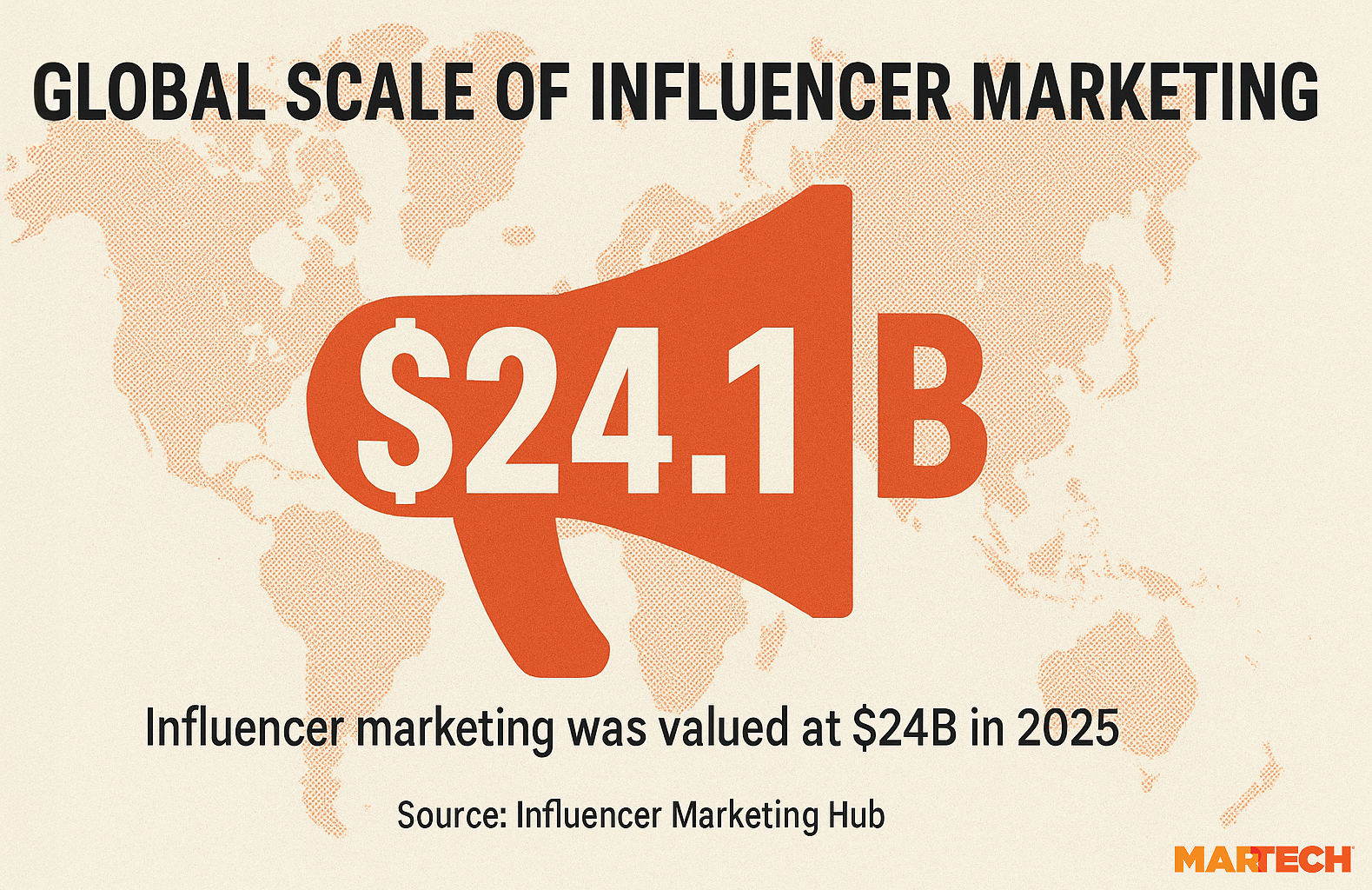
For enterprises, the challenge is coordinating global networks across regions and languages, staying compliant with evolving regulations, protecting their brand reputation, and maintaining effective governance. Meeting those demands requires campaign planning and a need for systems that directly connect to enterprise operations.
This guide walks you through how to build influencer relationships that can power a repeatable and measurable growth engine. You’ll see how to anchor programs in strategy, back them with governance, and connect them to your broader search and content ecosystem.
What makes enterprise influencer marketing unique?
At the enterprise level, influencer marketing isn’t a set of one-off campaigns. It becomes a next-level system that stretches across countries, cultures, and compliance frameworks. The scope is bigger, the stakes are higher, and the moving parts need to work together in a consistent way. With the proper structure in place, enterprises can turn that complexity into a repeatable model for growth.
So what actually makes enterprise influencer marketing different?
Let’s break it down.
Multi-market operations
Enterprises can’t rely on word-for-word translations when they scale influencer campaigns across markets. Local creators know the nuances—humor, tone, even color choices—that determine whether a message resonates or falls flat.
For example, a B2B SaaS brand might emphasize productivity and efficiency gains with a LinkedIn thought leader in the US. In Japan, partner with industry analysts to position reliability and long-term partnership. In Germany, focus on compliance and data security; in Latin America, emphasize flexibility and local customer success.
Tip: Build localization frameworks, not translations. Align messaging pillars globally, then allow local influencer partners to adapt the narrative as needed.
Dig deeper: International SEO: Best practices for global online success
Brand governance
Here’s where scale shows its teeth. With hundreds of creators posting for you, consistency isn’t a nice-to-have—it’s the thing that holds your brand together. So ask: How do you keep everyone aligned without flattening their creativity?
That’s the role of governance—playbooks that define tone of voice, visual standards, disclosure requirements, and approval flows. Without them, creators risk producing content that feels inconsistent and off-brand. A central framework ensures alignment across channels while still giving influencers the flexibility to express their own style.
Enterprises create governance playbooks covering:
- Tone of voice and visual identity
- Disclosure standards (#ad, #sponsored, local equivalents)
- Usage rights, windows, and prohibited claims
This ensures a cybersecurity analyst on LinkedIn and a wellness influencer on Instagram both reinforce the brand without creating whiplash. Governance gives creators freedom within a defined framework.
Budget allocation
Do you pour your budget into one mega-influencer, or spread it across a long tail of smaller voices?
What if the big bet doesn’t pay off?
Enterprises usually need a portfolio approach. Big names bring reach and authority, while micro and nano creators bring everyday authenticity that converts.
For example:
- A beauty brand pairs a global ambassador with 40 micro-influencers sharing their daily routines.
- A tech company sponsors a Gartner analyst keynote while engaging local cloud architects on LinkedIn.
This mix balances visibility and authenticity.
Compliance and risk
And then there’s regulation—the elephant in the room. What happens if one influencer misses a disclosure or makes a claim that doesn’t hold up? In industries like finance, healthcare, and energy, that misstep can turn into headlines for all the wrong reasons.
Enterprises need to be proactive and align with:
- Federal Trade Commission (FTC) rules
- General Data Protection Regulation (GDPR)
- AI-disclosure guidelines, especially for synthetic influencer content
- Platform policies (Meta, YouTube, TikTok, LinkedIn)
- Local advertising regulations in APAC and LATAM
Some action steps you can take include:
- Maintain a regional risk register
- Standardize contracts with disclosure/usage rights
- Train creators on market-specific disclosures
- Monitor posts with Semrush Brand Monitoring to catch missing mentions and risky claims
- Archive evidence (screenshots/URLs) for audits
Why does this matter? Because trust is everything. Nearly 70% of people say they’re more likely to trust a friend, family member, or influencer than the brand itself. That trust is fragile, and compliance is what protects it. For an enterprise SaaS brand, this means ensuring that influencers disclose sponsored posts, avoid making unverified claims, and respond promptly to compliance issues.
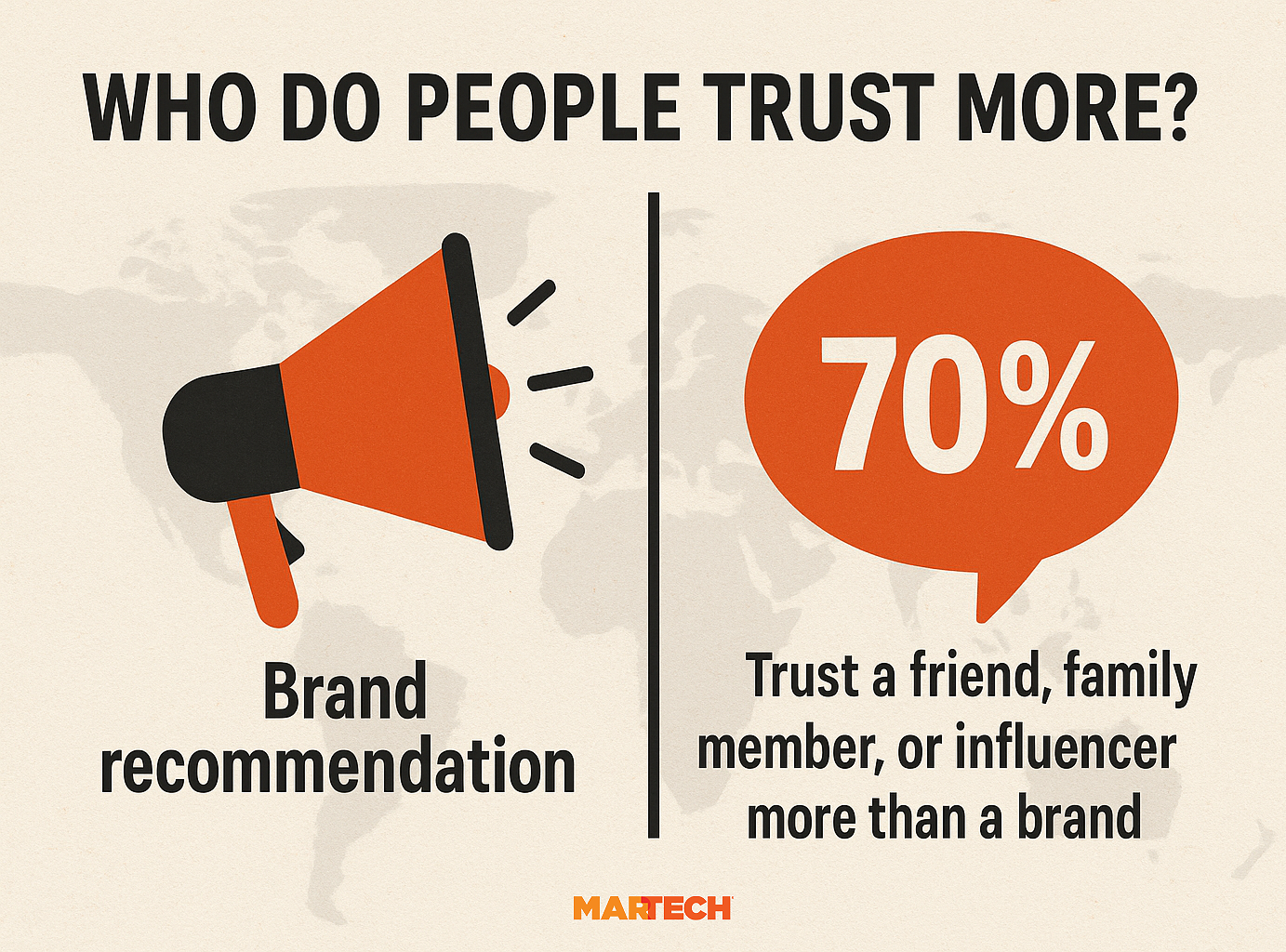
Building the right influencer mix
If influencer marketing at enterprise scale feels like trying to coordinate moving parts that never quite align, you’re not alone. The challenge isn’t finding “the one perfect influencer,” but building the right mix—an ecosystem where each type of voice supports the other.
So how do you decide who belongs in that mix, and why does it matter?
Mega, macro, micro, and nano influencers framework
Think of it as a portfolio. Mega-influencers are your global billboards: they have a huge reach and instant recognition. Macros bring deep authority in their fields.
Micros and nanos? They’re the ones your audience actually trusts because they feel like peers.
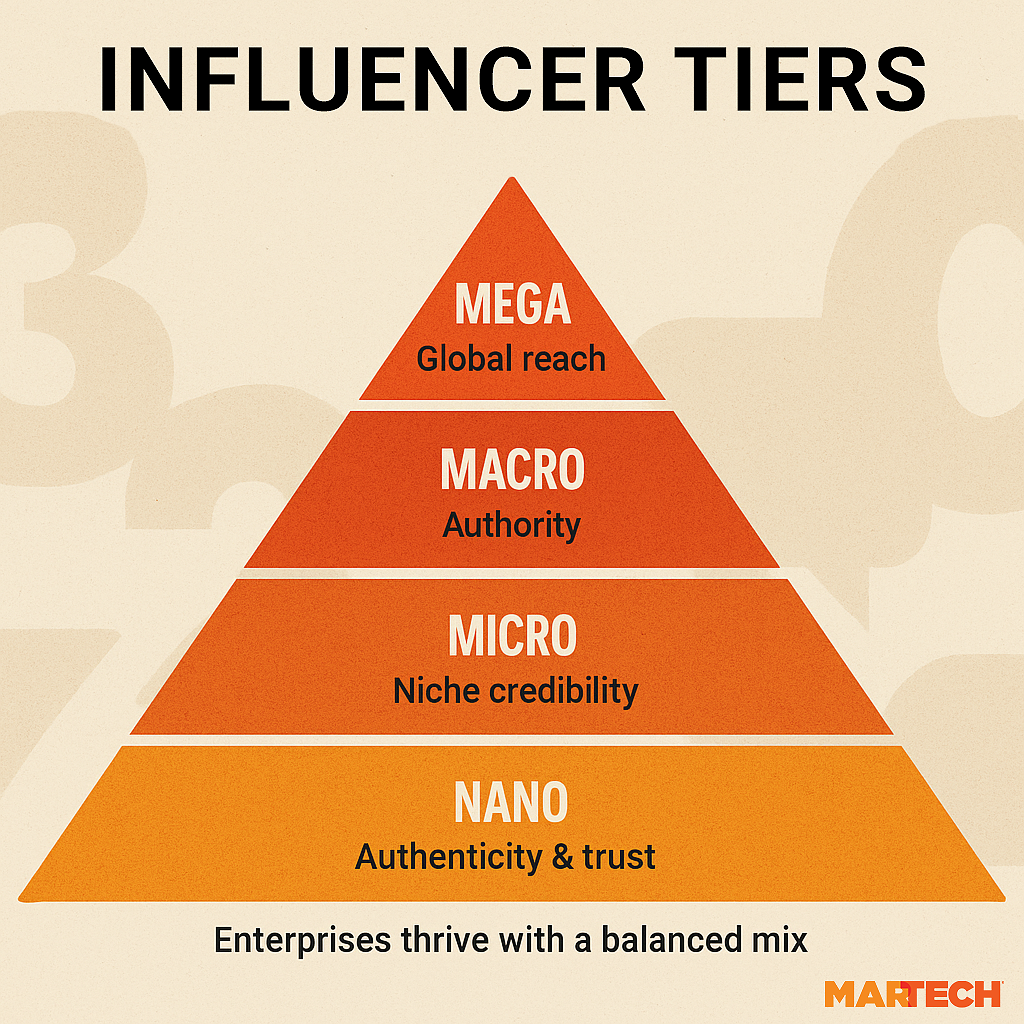
In B2B, a mega-influencer might be a globally recognized analyst speaking at Davos. A macro could be a niche industry consultant with a large LinkedIn following. Micros might include mid-level leaders who host respected podcasts, while nanos could be practitioners who share their expertise in Slack communities or on X. Together, they can create reach, credibility, and relatability.
Enterprises should avoid over-investing in a single influencer. A diversified mix reduces risk and expands reach across audiences.
From reach to trust and engagement
Here’s where enterprises often need a mindset shift. It’s tempting to chase raw reach, but what really drives results is trust and engagement. Studies show that B2B buyers consume an average of 13 or more pieces of content before engaging with a vendor—much of it shared by people they already follow.
For our software brand, a keynote from a mega-influencer can put a platform on the radar. A macro-influencer’s LinkedIn article might break down use cases. A micro-influencer on a podcast could unpack lessons from implementation. A nano sharing their day-to-day workflow builds ground-level credibility. The mix is what turns awareness into pipeline.
B2B vs B2C differences
Not all influencer programs look the same.
- B2C often leans on Instagram, TikTok, or YouTube—think product demos, unboxing videos, and lifestyle integrations.
- B2B tends to center on LinkedIn thought leaders, research partners, analyst firms, industry newsletters, or niche podcasts.
A cloud software company, for instance, might run both streams. Consumer-facing campaigns drive brand awareness through lifestyle creators, while the enterprise side builds partnerships with Gartner analysts, SaaS podcasters, and CIO community leaders. Both streams are valid, but they need distinct channel strategies.
AI-assisted influencer discovery
Here’s where things get exciting. Finding the right influencers at enterprise scale used to mean endless spreadsheets and guesswork. AI brings structure: Entity mapping, social graph analysis, and audience overlap modelling can identify high-fit creators in minutes.
For example, AI might reveal that a niche cybersecurity podcaster not only directly influences CISOs but is also frequently quoted in analyst briefings and community forums. With this insight, you can transform them from a “campaign partner” into a strategic ally throughout the buyer journey.
Your Attribution Model is Missing 40% of Brand Discovery
✓ Track brand mentions across all AI search platforms in real-time
✓ Connect AI-driven discovery to your existing analytics
✓ Measure sentiment and accuracy of every AI mention
Enterprise-grade AI tracking. Finally.
Strategies for scaling influencer programs
Scaling influencer marketing in a global enterprise requires clear structures, defined roles, and reliable workflows. Without them, campaigns become fragmented, and it becomes difficult to measure results.
Centralized vs. decentralized management
Enterprises need to decide on their operational model:
- Centralized: One global hub manages messaging, approval processes, and campaign strategy. Ensures brand consistency and compliance across all regions.
- Decentralized: Regional teams execute campaigns to reflect local culture, language, and market nuances. Enables agility and relevance.
- Hybrid: Combines global guidelines with regional execution. This is the most common approach for large B2B and B2C enterprises.
For example, a global SaaS company centralizes key messaging and legal approvals but allows regional teams to select local thought leaders, consultants, or podcasters aligned with specific verticals.
Agencies, networks, and in-house teams
Enterprises often use a combination of:
- Agencies: Speed, creative concepts, and access to new talent pools.
- Influencer networks/platforms: Vetted lists of creators and workflow automation.
- In-house teams: Governance, compliance, and alignment with enterprise strategy.
Example: A cybersecurity firm might use an agency to manage a LinkedIn thought-leader campaign, a network platform to identify niche podcasts, and the in-house team to enforce compliance and brand standards.
Standardized contracts and KPIs
Another critical element is standardizing contracts and metrics at scale, which reduces risk, enhances measurement accuracy, and helps clarify how you secure return on investment. Contracts should consistently include:
- Deliverables, formats, and revision limits
- Usage rights (owned/paid/earned; whitelisting; duration; geos; channels)
- Disclosure and compliance language (FTC, ASA, GDPR; market-specific tags; AI-generated content disclosures)
- Brand guidelines and visual/voice standards
- Approval SLAs and legal review windows
- Deadlines, posting windows, and exclusivity/non-compete terms
- Payment terms, invoicing, and late/cancellation/make-good policies
- Data & tracking (UTMs, required screenshots/links, access to performance data)
- Indemnification, morality/brand-safety clause, and termination rights
- Archival requirements (proof of disclosure; content backups)
Dashboards and KPIs should roll up campaign performance across regions, tracking metrics such as engagement, conversions, branded search lift, and contribution to pipeline or NRR.
Content repurposing workflows
Influencer content is a valuable asset beyond social channels. Enterprises can repurpose content across multiple touchpoints:
- Paid ads (social, display, retargeting)
- Blog posts and knowledge hubs
- SEO content hubs using Semrush for keyword optimization
- Case studies and customer education materials
- Sales enablement assets
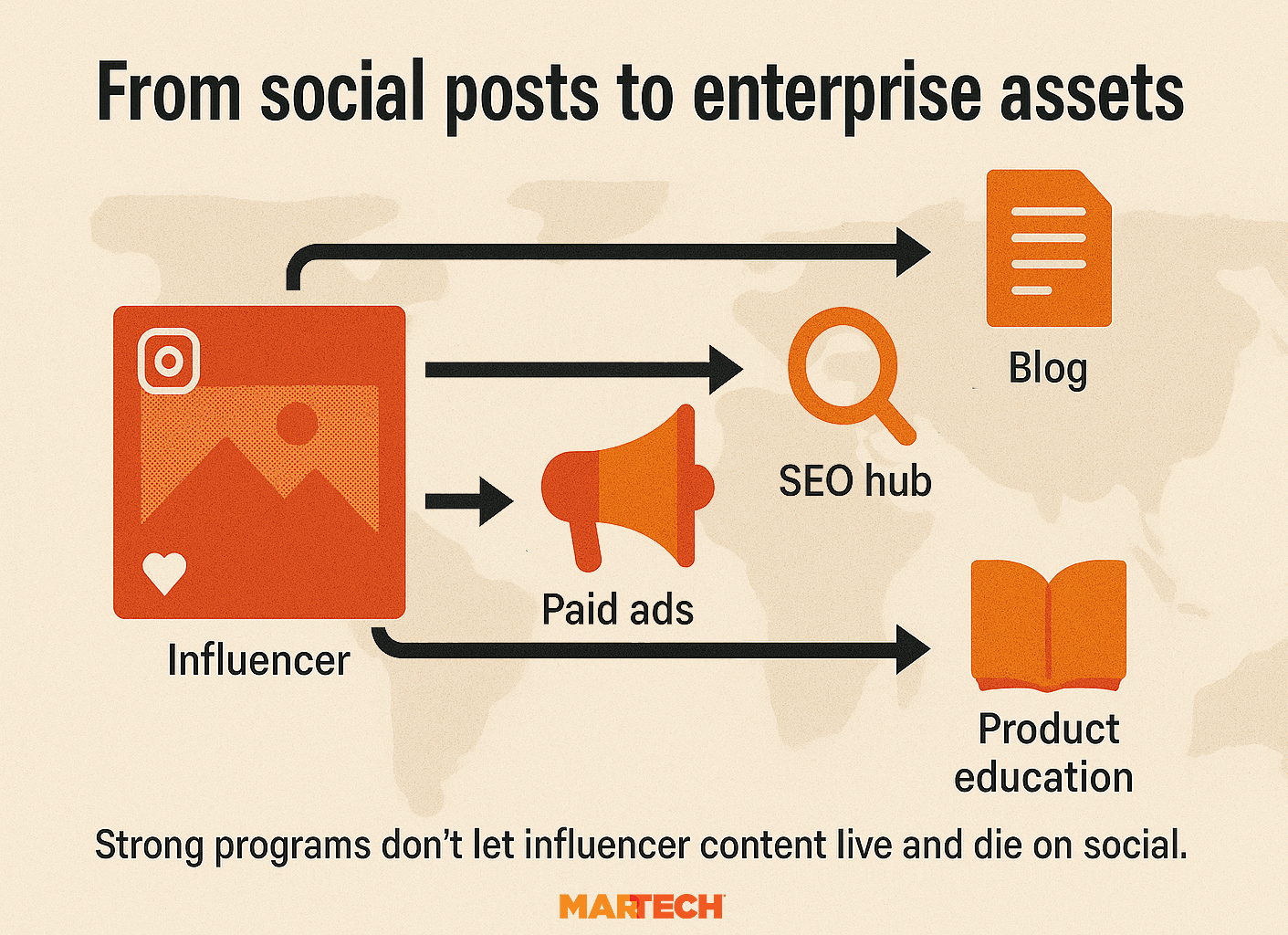
Tools and platforms commonly used include influencer CRMs (for workflow tracking and reporting), as well as Semrush and Ahrefs (for SEO repurposing), and project management platforms to coordinate content approvals globally.
Dig deeper: How to optimize your website for AI-powered search.
Integrating influencers into the enterprise SEO & content ecosystem
Influencer collaborations are critical assets in enterprise marketing, SEO, and content strategy. Every mention, backlink, and review can feed long-term visibility and credibility. To integrate this systematically, enterprises can follow a three-step framework.
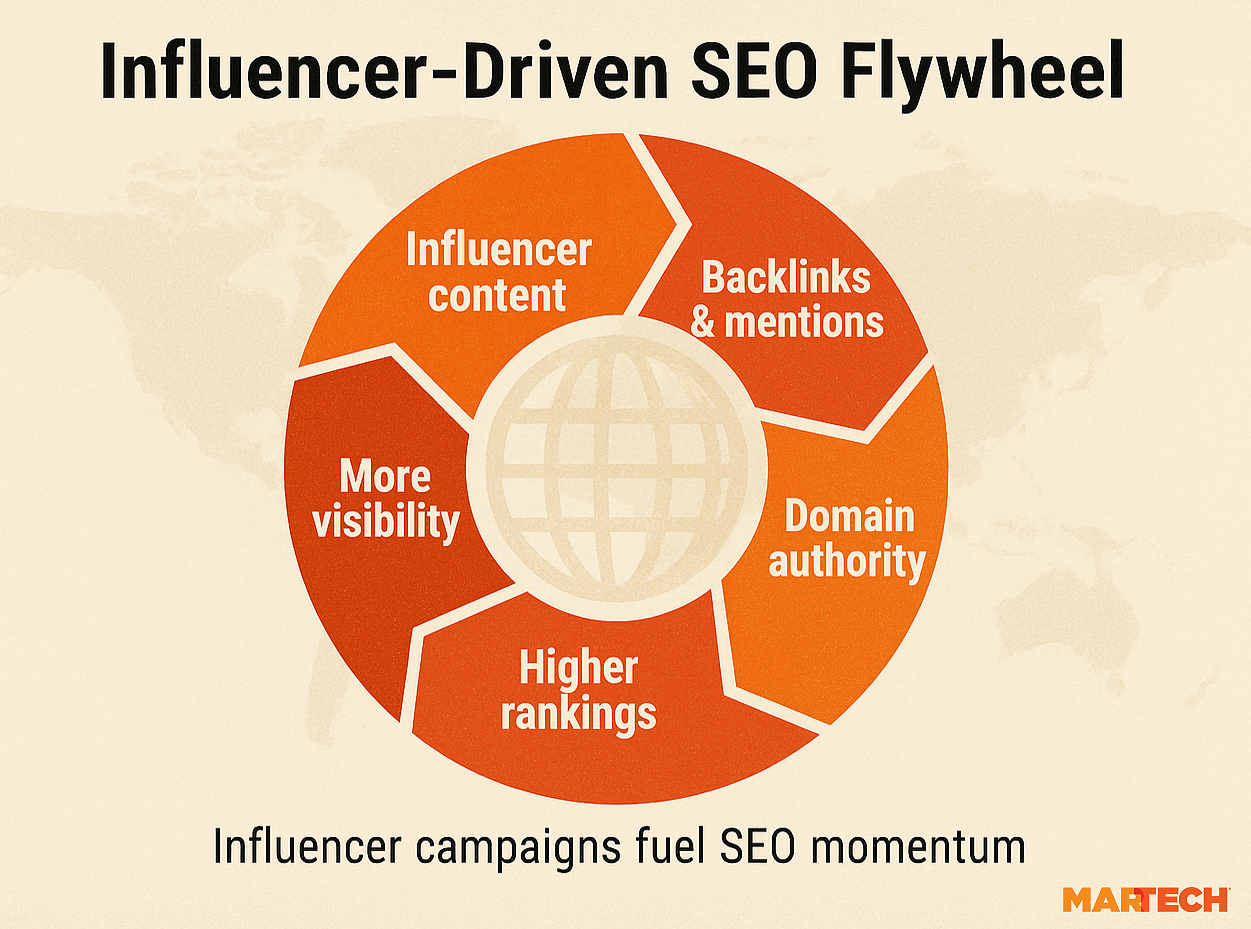
Mini-framework for leveraging influencer content
- Identify influencer-created content across social channels, blogs, podcasts, and other platforms.
- Track mentions and backlinks using tools like Semrush Backlink Analytics to see which influencer signals are driving authority.
- Map signals against keyword rankings to understand which influencer content contributes to search visibility and content amplification.
Using influencer content to earn backlinks and mentions
Backlinks are still one of the strongest signals that search engines use to determine who deserves the top spot. And who’s better at generating organic mentions than high-authority influencers? When they talk about your brand, bloggers, niche journalists, and even other creators tend to follow suit.
Picture a cybersecurity company partnering with a respected industry podcast. The episode is referenced in niche blogs, LinkedIn articles, and professional forums, generating backlinks that elevate the brand’s authority.
Have you identified which influencer partnerships could serve as backlink engines for your brand? If not, this is a practical starting point. Consider your target audience demographics and start brainstorming what types of content would resonate most, then find the influencers who’d make it.
Dig deeper: How marketers can succeed with generative engine optimization.
UGC and reviews for E-E-A-T
Now, let’s talk about trust. Google’s E-E-A-T framework—Experience, Expertise, Authoritativeness, and Trustworthiness—has become the standard for judging content quality, especially in high-stakes industries such as health, finance, or wellness.
This is where user-generated content (UGC) and influencer reviews shine. They’re authentic, rooted in real-world experience, and they send powerful trust signals to both search engines and your audience. Remember, the creator economy is estimated to be worth more than $100B—that’s a lot of social proof floating around waiting to be harnessed.
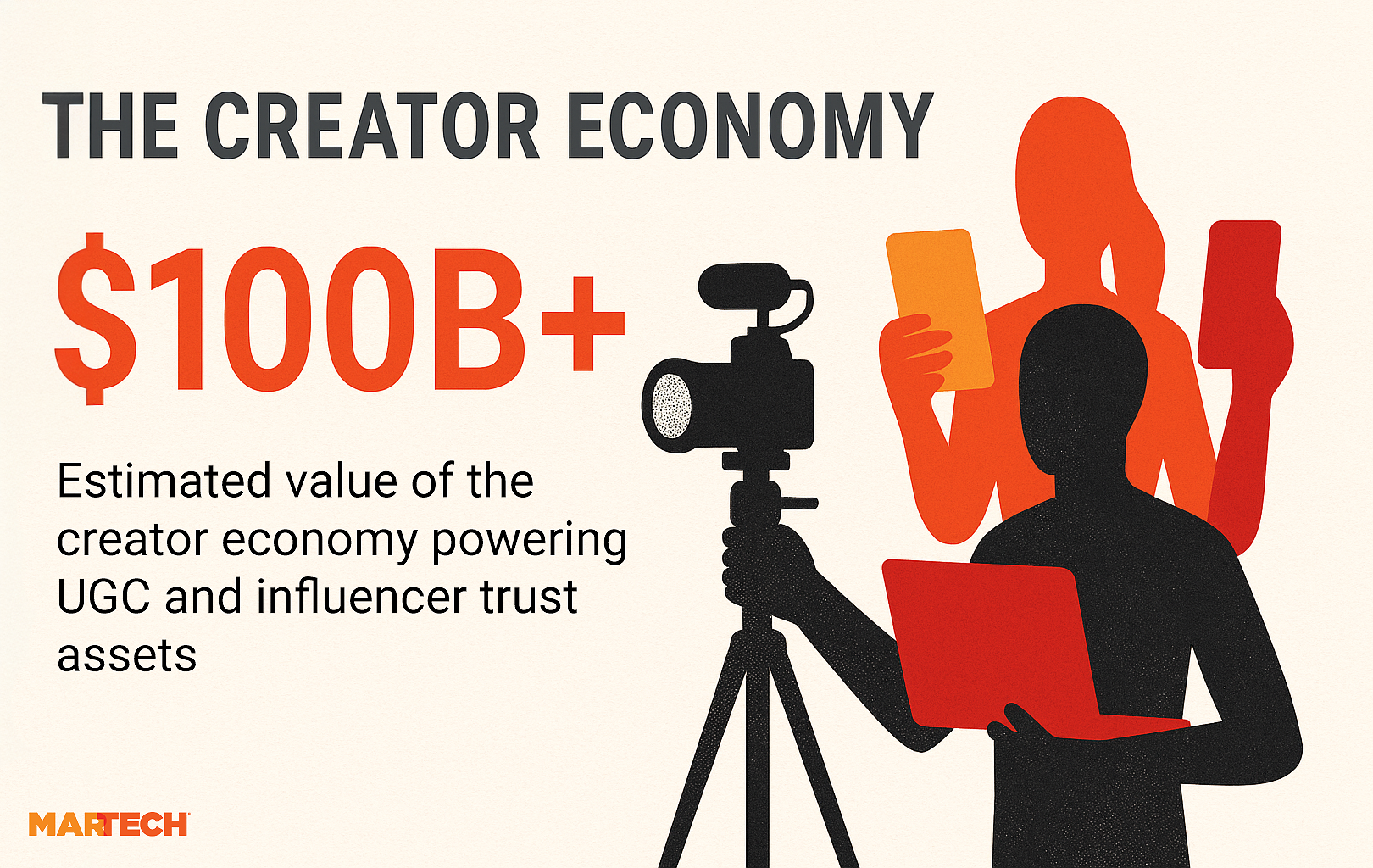
For example, a cloud software provider’s influencers review case studies or demo tools on LinkedIn. This content appears across blogs, newsletters, and discussion groups, signaling trustworthiness and expertise to search engines.
Dig deeper: How AI is changing the rules of web traffic.
Embedding quotes in thought leadership
Influencers aren’t only good for campaign posts—they can also raise the authority of your thought leadership. Including their quotes in whitepapers, co-authoring articles, or inviting them to contribute insights to your enterprise blog signals expertise to both people and search engines.
Example: A CMO co-authors a LinkedIn article with a SaaS industry analyst on “Future Trends in Enterprise AI.” This elevates brand authority and boosts search revenue.
Syndication into paid and owned channels
Finally, let’s not leave influencer content stranded on Instagram. Strong programs repurpose influencer assets across paid, owned, and earned channels. That review video? It becomes a cutdown for a pre-roll ad. That Instagram carousel? It turns into a product page module. That thought leadership quote? It anchors a blog post that feeds your SEO strategy.
Our fitness brand could take one influencer’s 60-second recovery routine video and:
- Run it as a TikTok ad.
- Feature it on their ecommerce product page.
- Drop it into an email campaign as authentic social proof.
In doing so, you close the loop—earned media feeds owned media, which then powers paid campaigns. Suddenly, influencer content isn’t an isolated tactic; it’s a growth multiplier.
Measurement and attribution at enterprise scale
Measuring influencer impact in a global enterprise is complex but critical. The goal here is clarity. Measurement is about more than vanity metrics—it’s about proving influence in the same boardroom language as sales, product, and finance. So let’s unpack the challenges, the solutions on the table, and the KPIs that truly matter.
Challenges
The biggest headache? Dark social. That’s all the private shares happening in DMs, WhatsApp groups, or Slack channels that never show up in your analytics.
Then comes multi-touch attribution—the reality that a customer might see your influencer on TikTok, Search for your brand on Google, click a paid ad, and then convert via email. Which channel gets the credit?
Finally, global enterprises often suffer from siloed reporting, as each region tracks results differently, resulting in a blurry global picture at best.
For example, influencers in Asia might drive awareness through LINE groups, while those in Europe rely on LinkedIn’s thought leadership. Without integration, those signals look fragmented instead of additive.
Solutions
Now for the good news, there are ways forward.
First-party data + CRM/CDP
Tie influencer engagements directly to account activity in your CRM. For instance, a cloud security SaaS tags all LinkedIn leads who engage with an influencer webinar. When those contacts later book demos in Salesforce, Marketing can prove the influencer’s role in pipeline creation.
Marketing mix modeling (MMM) & incrementality testing
Measure whether influencer-led campaigns drive sales or pipeline lift beyond existing demand. Consider a project management SaaS platform running MMM across the Asia-Pacific region, focusing on a three-month influencer campaign on YouTube. The model shows a 15% incremental lift in trial sign-ups compared to control regions.
AI attribution models
Use machine learning to map influencer impact on downstream signals like branded search or retention. For example, an enterprise data platform uses AI attribution to reveal that influencer blog mentions led to a 22% increase in branded search and a higher conversion rate among enterprise accounts entering the sales cycle.
Which of these solutions feels closest to what your team could actually adopt in the next quarter?
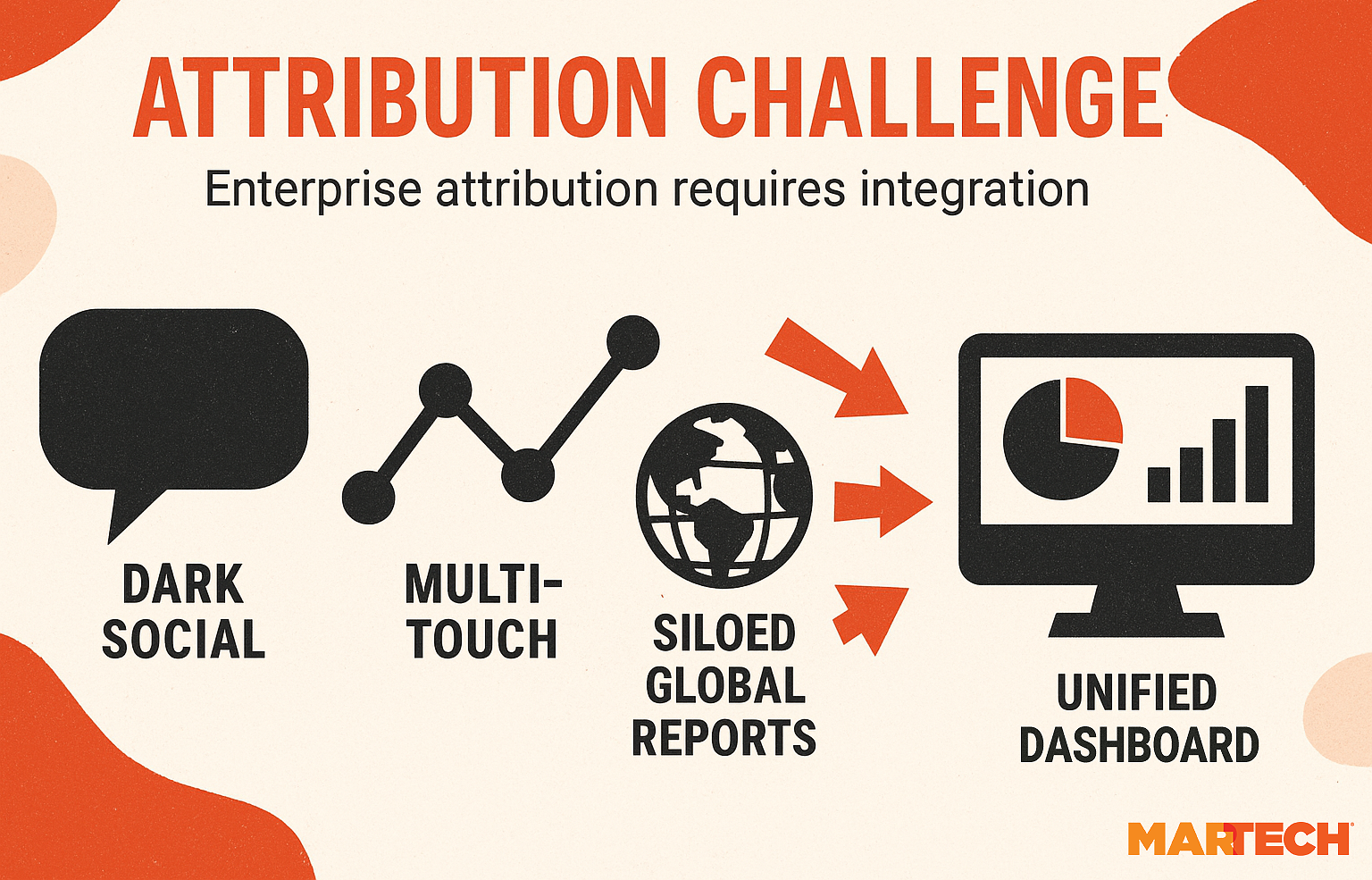
KPIs
At enterprise scale, leadership cares less about likes and more about business impact. The matrix below highlights KPIs that connect influencer activity to outcomes that matter for B2B SaaS growth.
| KPI | Why it matters | Example |
| Branded search lift | Shows how influencer campaigns increase curiosity and demand for your brand. | After a LinkedIn influencer campaign, searches for “XYZ AI platform” rose by 28% in Google Search Console. |
| Content amplification | Tracks how far influencer content travels beyond the original post (shares, mentions, backlinks). | A guest podcast episode with an industry analyst gets reshared across LinkedIn groups, cited in a SaaS review blog, and linked in a Gartner peer review. |
| Conversions (sign-ups, demos, trials) | Proves direct impact on lead generation and pipeline creation. | An influencer webinar generates 400 demo requests, which are tagged in Salesforce. |
| Net Revenue Retention (NRR) | Shows long-term revenue health by proving that influencer-acquired customers renew and expand. | Customers sourced via an influencer partnership have a 112% NRR compared to the 98% company average. |
| Pipeline influence | Connects influencer content to deal velocity and account engagement. | Influencer-authored whitepaper is downloaded by five target accounts, accelerating deal stages in HubSpot. |
The takeaway: Enterprise measurement doesn’t need to solve every gap in attribution. The goal is a repeatable framework that ties influencer activity to meaningful outcomes—branded demand, conversions, retention, and pipeline impact. When measured this way, influencers shift from a “nice-to-have” to a proven growth driver in the marketing mix.
Governance, compliance, and brand safety
When you’re running influencer marketing at enterprise scale, creativity is only half the story. The other half is governance–systems that protect your SaaS brand’s reputation, ensure compliance across markets, and give leadership confidence that campaigns won’t create unnecessary risk.
Disclosure requirements
Transparency is non-negotiable. Regulators, such as the FTC in the US and the ASA in the UK, expect influencers to state clearly when content is sponsored. Platforms themselves are also tightening their rules. Enterprises need systems that track disclosures across every market and create audit trails to show regulators, “Yes, we did this right.”
Example: A SaaS company working with a German LinkedIn creator must include #Anzeige or face both fines and a loss of credibility. A consistent checklist baked into every influencer brief removes the guesswork.
Compliance checklist:
- Clear disclosure language in every brief (#ad, #sponsored, local equivalents)
- Monitoring dashboards to track posts and verify disclosures
- Escalation steps if disclosures are missing (pause content, notify influencer, update regulators if required)
- Audit log of influencer activity by region for regulator review
- Pre-launch compliance training for influencer partners
- Archiving of campaign evidence (screenshots, URLs, reports)
Global compliance resources:
Influencer misconduct
Even the best partnership can sour. Maybe an influencer makes an offensive remark, or a years-old post goes viral for the wrong reasons. At enterprise scale, you can’t cross your fingers and hope it blows over—you need a crisis playbook.
For a SaaS firm, this could mean:
- Immediately pausing collaboration and content distribution
- Assessing reputational risk with legal and comms teams
- Replacing the influencer with pre-approved alternatives if necessary
A documented process ensures quick action and prevents localized issues from becoming global problems.
AI-generated influencer content
Synthetic influencers are also emerging in B2B contexts—think AI-powered avatars hosting webinars or demo videos. These assets can scale quickly, but they raise governance concerns: Should you disclose that they’re AI? What ethical guardrails apply?
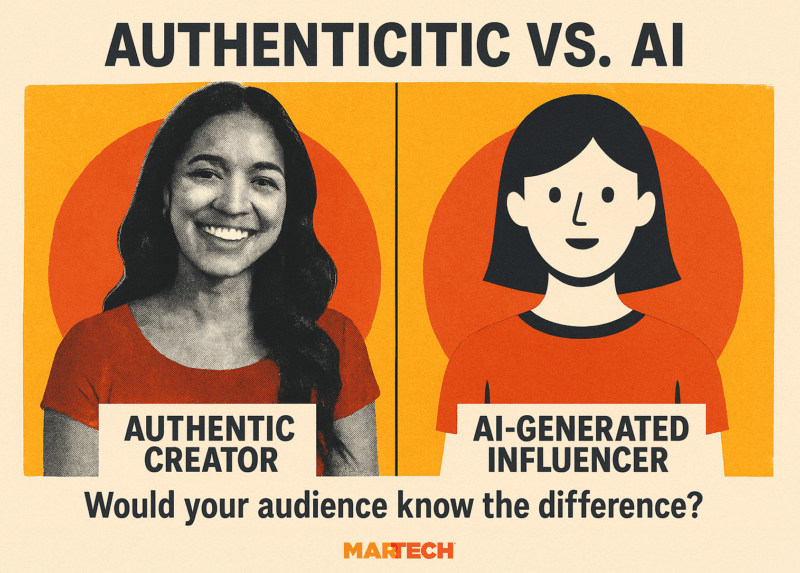
For SaaS enterprises, this means:
- Always disclosing AI-generated content
- Avoiding misleading depictions of usage or testimonials
- Creating internal policies before launching AI influencer campaigns
Escalation frameworks
At the enterprise level, problems rarely stay local. A compliance issue in APAC can quickly become a headline in North America. That’s why escalation frameworks matter: Clear tiers of response that involve regional leads, legal, comms, and executives.
Best practice for SaaS enterprises:
- Tier 1: Regional marketing lead pauses content
- Tier 2: Legal/compliance reviews and issues response guidance
- Tier 3: Corporate comms and executive leadership decide on global positioning
Escalation should never be improvised. Every region should know exactly who to contact first and how issues are addressed—from marketing leads to legal, communications, and executive leadership.
Ask yourself: If something went wrong tomorrow, would your team know who picks up the phone first?
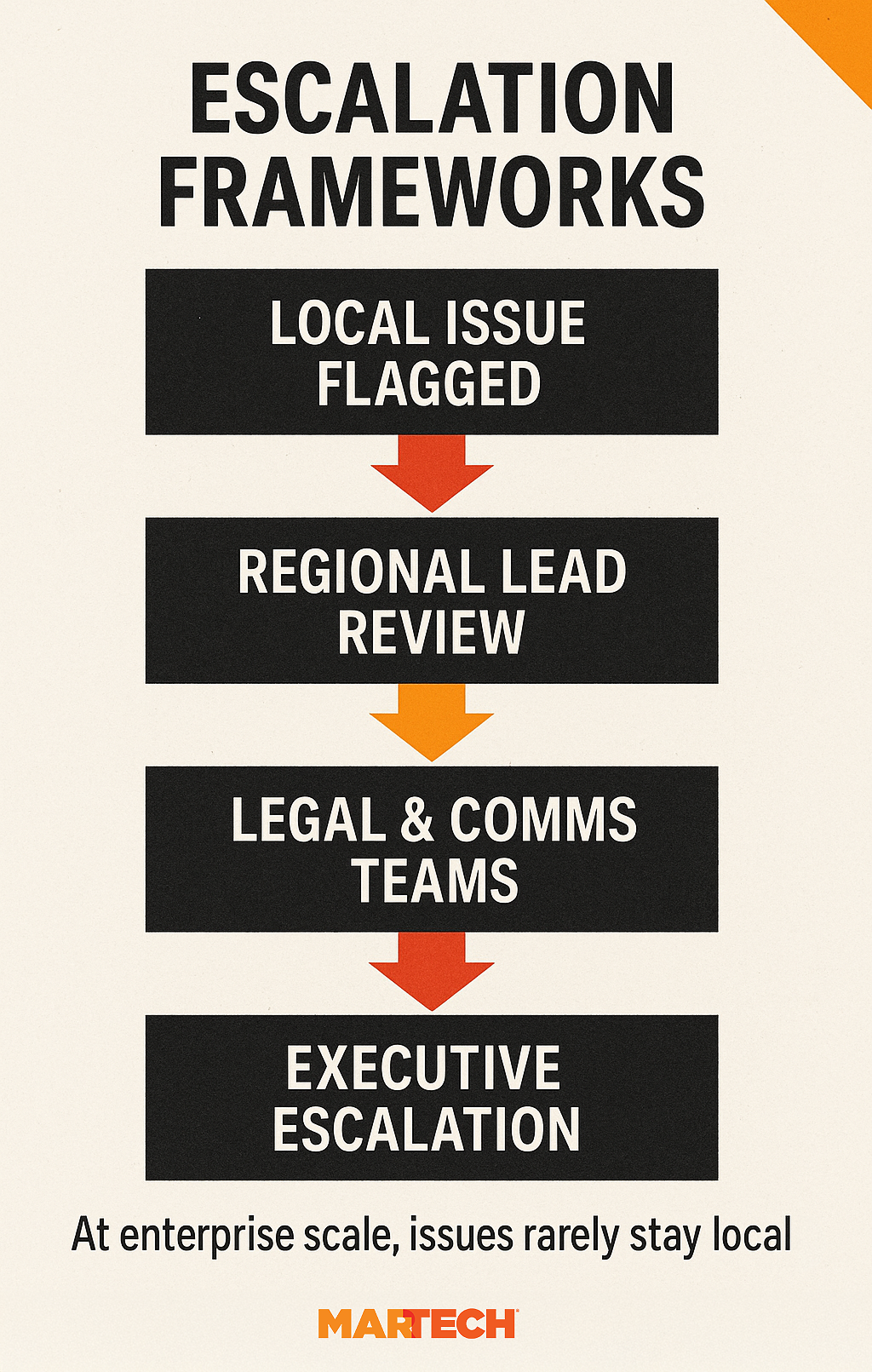
The takeaway: Governance, compliance, and brand safety might not sound glamorous, but they’re the invisible scaffolding that holds your enterprise influencer program together. When they’re in place, your teams feel confident, your brand feels secure, and your campaigns can scale without fear.
What is search marketing, and why does it matter here?
Search marketing combines SEO and SEM to capture demand at the moment of intent. For enterprises, it means building authority, visibility, and pipeline at scale. Influencer campaigns often create that demand—sparking branded searches, backlinks, and higher domain authority that search marketing can capture and convert.
Research indicates that 88% of Gen Z and millennials use social media to research products before making a purchase. When influencers generate awareness, much of that audience turns to search immediately. If your brand isn’t visible in those moments, competitors will capture the traffic.
Influencer-driven demand can be measured directly with search metrics like:
- Lift in branded keyword searches
- Backlinks from high-authority mentions
- Growth in organic visibility and domain authority
Influencers drive curiosity, and search marketing ensures that curiosity translates into measurable pipeline and revenue.
Dig deeper: How to turn SEO wins into geo dominance
Turning enterprise influencer marketing into a growth engine
Influencer marketing at the enterprise level is a strategic growth lever. Success comes from combining centralized governance with local nuance, building a layered influencer mix, integrating with SEO and content strategy, and measuring impact with enterprise-grade models.
For leaders, the next step is to audit current programs against these pillars: Influencer mix, operational model, integration with search, and measurement. From there, establish standardized frameworks so that every region, product line, and function can integrate into a shared playbook.
When executed effectively, influencer marketing fosters reach, authority, trust, and resilience in an increasingly fragmented digital world.
While you’re considering how to structure an influencer program, don’t forget to refresh your content marketing strategy.